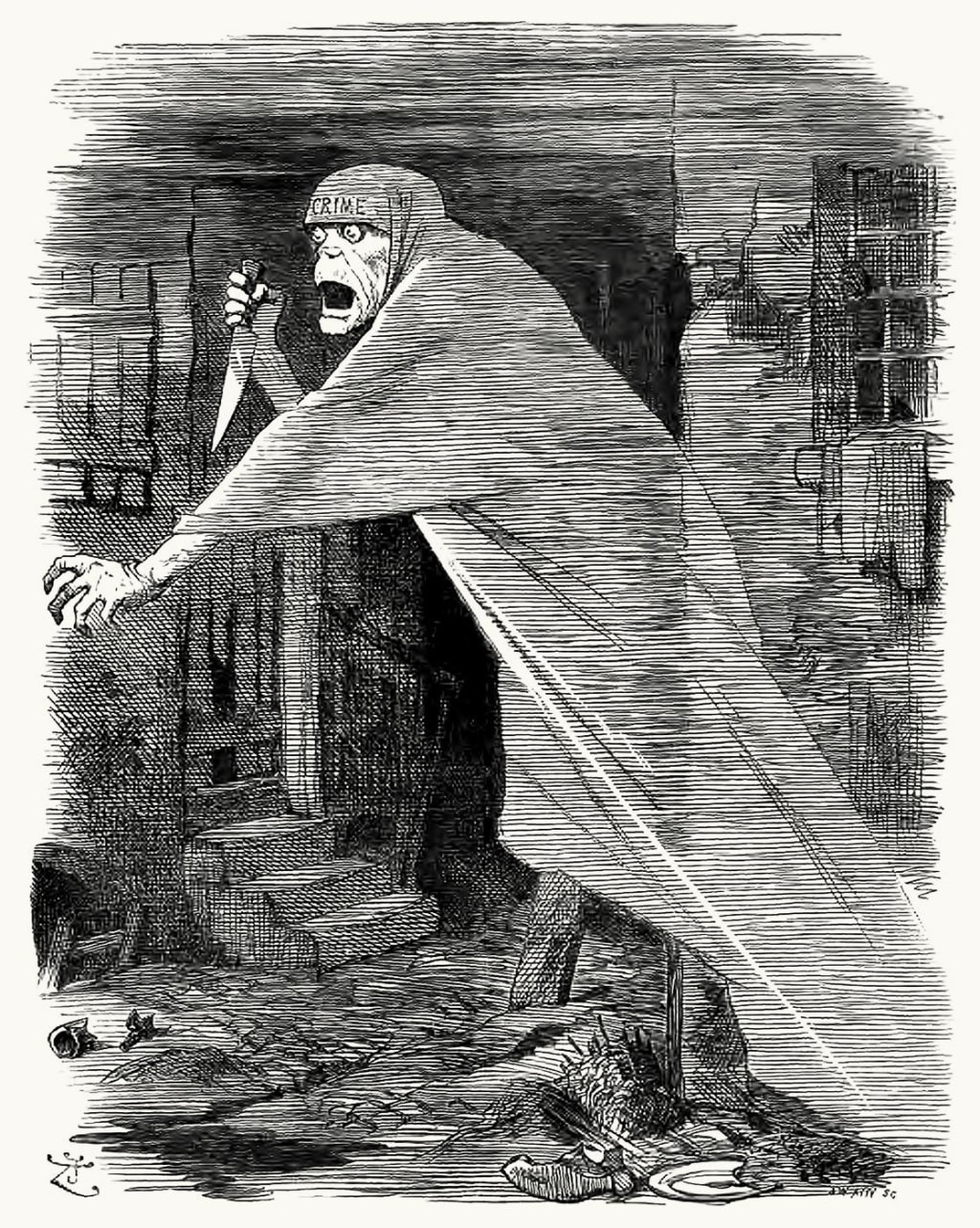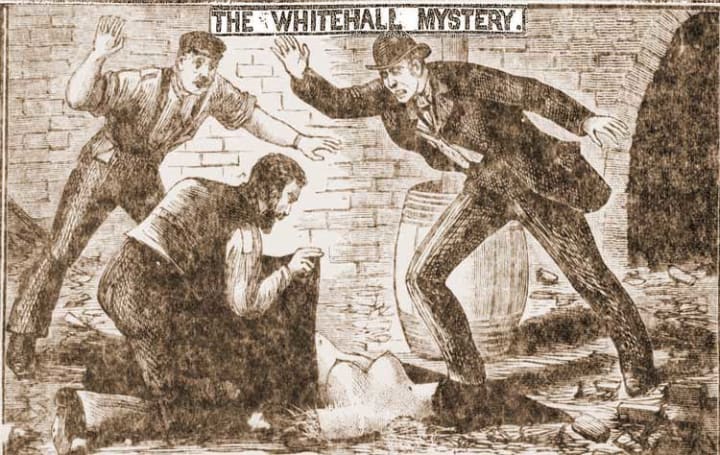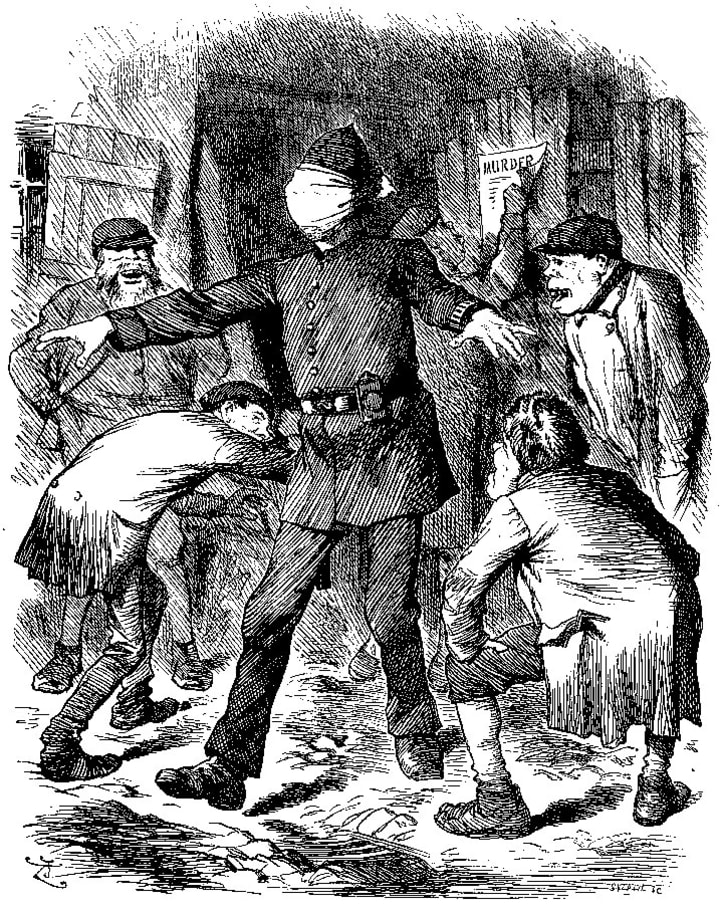
In the late 19th century, in the poverty-stricken and socially troubled district of Whitechapel, London, a wave of brutal and horrific murders sent shockwaves through the community. The atmosphere of fear and panic was palpable as the infamous Jack the Ripper unleashed a reign of terror upon the vulnerable female prostitutes who roamed the dangerous streets.

The victims of Jack the Ripper's gruesome crimes were five women who became known as the canonical victims: Mary Ann Nichols, Annie Chapman, Elizabeth Stride, Catherine Eddowes, and Mary Jane Kelly. These women led precarious lives, forced into prostitution by desperate circumstances. The poverty and vulnerability that plagued Whitechapel made them easy targets for the deranged killer.
Mary Ann Nichols was the first victim to fall prey to Jack the Ripper's bloodlust. On a dark August night in 1888, she encountered her killer in the shadows, and her life was abruptly cut short.
The way the killer operated was by cutting the throats of the victims and then mutilating and disemboweling them in a gruesome manner. The violence became more severe with each murder, causing the community to be filled with fear and speculation.

Annie Chapman, another unfortunate victim, had lived a life marred by hardships and destitution. Her encounter with Jack the Ripper ended in a horrifying display of brutality.
The killer not only mutilated her body but also removed organs, leaving a scene of unimaginable horror. The shock of the public and authorities intensified, driving the desperate search for the perpetrator.
Elizabeth Stride and Catherine Eddowes would forever be linked in their tragic fate, as their bodies were discovered on the same night. While Stride's murder did not exhibit the same level of mutilation as the previous ones, it bore the unmistakable signature of Jack the Ripper.
Eddowes, on the other hand, suffered extensive injuries, including the removal of her uterus and a kidney, her abdomen was ripped open, her intestines placed on her right shoulder, and her face had been disfigured.

The chilling nature of the crimes left investigators bewildered and the public in a state of heightened anxiety.
The final canonical victim, Mary Jane Kelly, endured the most grotesque fate. Found in her rented room, she had been subjected to unimaginable brutality. Her body lay mutilated beyond recognition, her abdomen almost emptied of its organs, and her heart was missing from the crime scene.

The above image: Women and children in front of one of the Whitechapel common lodging-houses close to where Jack the Ripper murdered two of his victims.
The response to the Ripper's reign of terror was met with a combination of fear, anger, and panic. The police and the public were desperate for answers. Inspector Frederick Abberline and his team tirelessly pursued leads, determined to bring the elusive killer to justice.
However, the investigations were plagued by numerous challenges, including the lack of advanced forensic technology and the difficulty of gathering reliable evidence in the densely populated and poverty-stricken district.
Speculation and theories surrounding Jack the Ripper's identity ran rampant. Various suspects emerged, captivating the public's imagination. Montague John Druitt, a troubled barrister, and Aaron Kosminski, a Polish Jew suffering from mental health issues, were among the most notable suspects. Walter Sickert, an artist with a connection to the crimes according to some theories, also came under scrutiny. However, despite these suspicions, the true identity of Jack the Ripper remains an enduring mystery.
The atmosphere of fear and hysteria that gripped the Whitechapel district during the Ripper's reign of terror was further fueled by media sensationalism. Newspapers vied for attention, publishing graphic illustrations and vivid descriptions of the murders. Sensational headlines and exaggerated accounts permeated the streets, contributing to the panic and escalating the public's terror.
The legacy of the Jack the Ripper case extends far beyond the boundaries of Whitechapel. It left an indelible mark on society, criminology, and popular culture. The case sparked debates on social inequality, the plight of the impoverished, and the treatment of women in Victorian society. Criminological techniques and forensic science evolved as a result of the limitations exposed during the investigation.
The enduring mystery surrounding the identity of Jack the Ripper has captivated generations. Countless books, movies, and theories have emerged, each attempting to shed light on the enigma that has eluded investigators for over a century. Walking tours, museums, and annual gatherings of enthusiasts keep the fascination alive, as the world remains determined to uncover the identity of one of history's most infamous and elusive criminals.
In conclusion, the horrors unleashed by Jack the Ripper continue to haunt the collective consciousness. The legacy of fear, the unanswered questions, and the enduring mystery surrounding the killer's identity serve as a chilling reminder of the darkest corners of human nature.
In fact, the name "Jack the Ripper" came from a "Dear Boss letter" written by someone who was claiming to be the murderer. The letter was believed to be a hoax, and many said it was written by a journalist to increase their newspaper circulation. There was another letter, "From hell letter" that came with a preserved human kidney believed to be taken from one of a victim's body.

As society progresses and technology advances, the quest for the truth behind the Whitechapel murders persists, driven by an unwavering determination to unveil the face of a monster who forever altered the course of history.
About the Creator
Kamya
We should enjoy every moment fully, fall in love, make the most of our time, and live without regret. We should cherish the fact that there are still many moments in life that we have yet to experience for the last time.






Comments
There are no comments for this story
Be the first to respond and start the conversation.